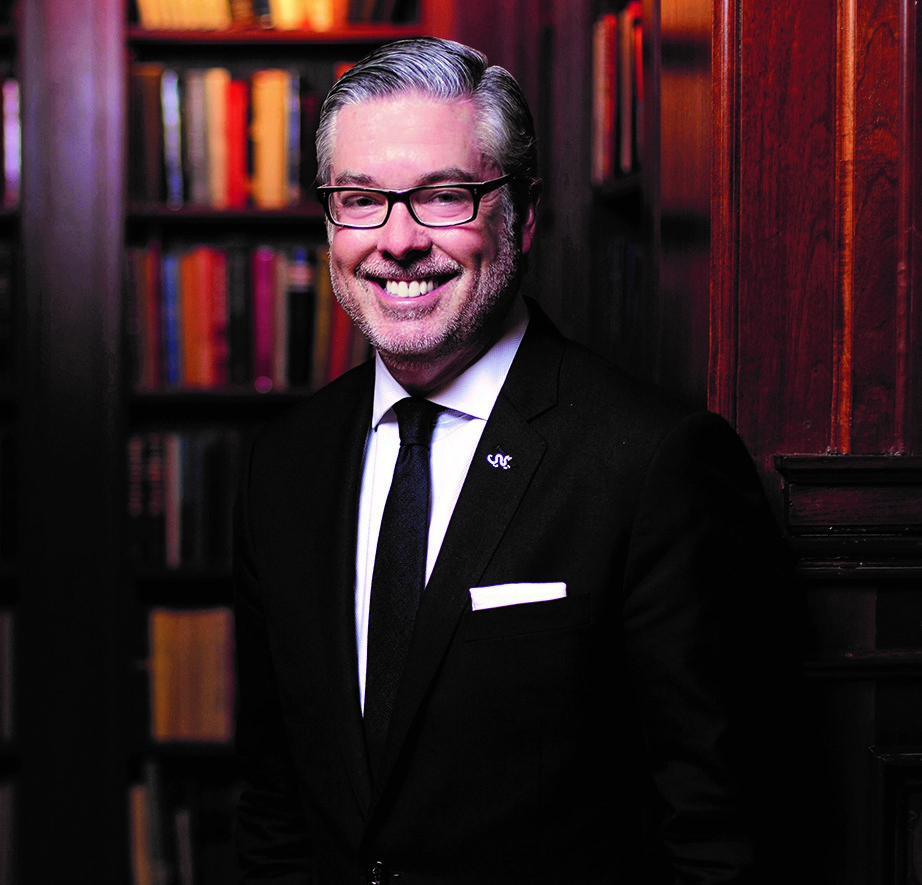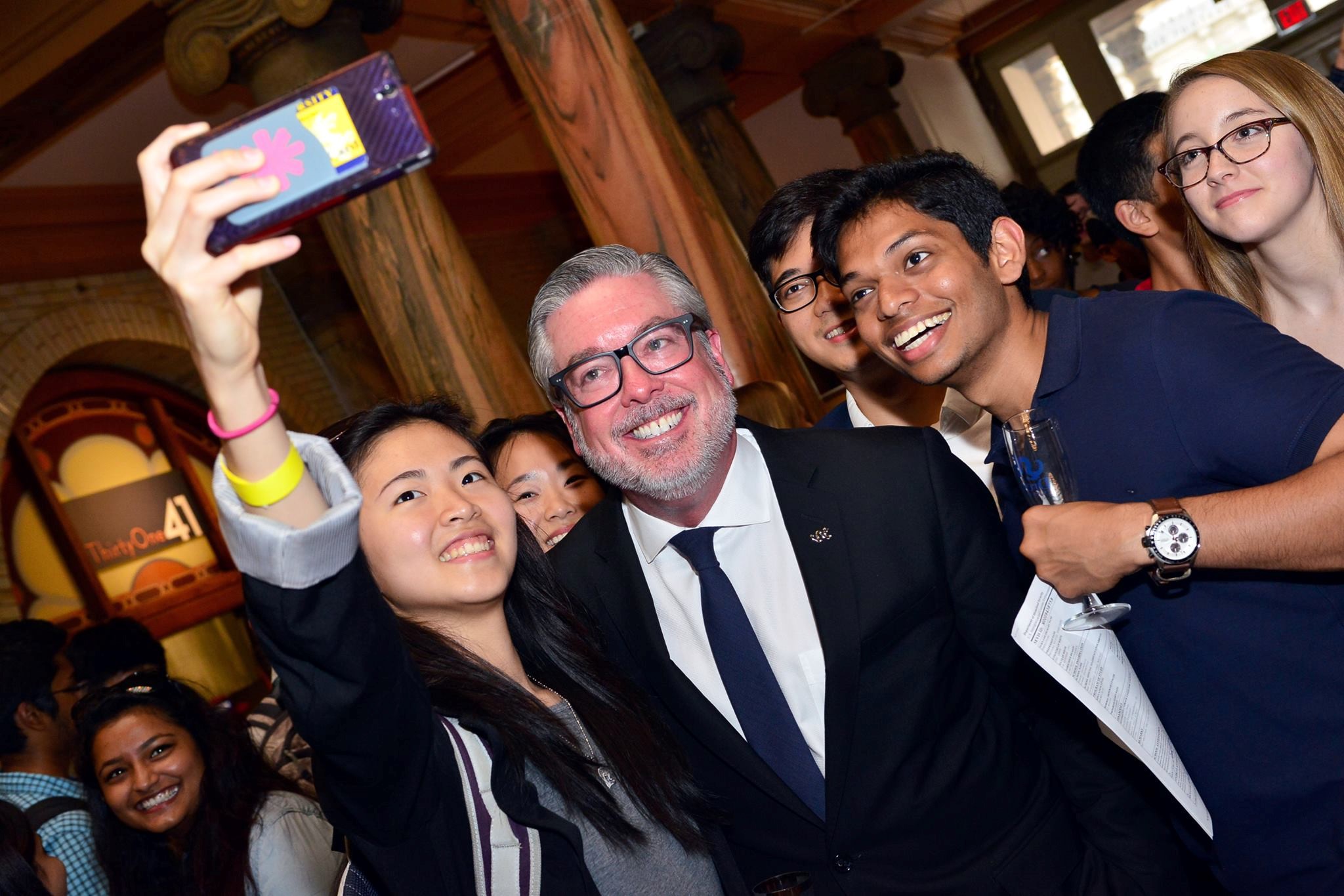Q: What led to Drexel University and Salus University becoming serious merger partners? Why Salus?
 A: At Drexel, we recently made significant investments in the health sciences. Just two years ago, we opened a new 460,000-squarefoot, state-of-the-art academic home that brought together Drexel’s College of Nursing and Health Professions, College of Medicine, and the Graduate School of Biomedical Sciences and Professional Studies in University City, enhancing collaboration, research and practice opportunities. This is a game changer for Drexel.
A: At Drexel, we recently made significant investments in the health sciences. Just two years ago, we opened a new 460,000-squarefoot, state-of-the-art academic home that brought together Drexel’s College of Nursing and Health Professions, College of Medicine, and the Graduate School of Biomedical Sciences and Professional Studies in University City, enhancing collaboration, research and practice opportunities. This is a game changer for Drexel.
As we continue to expand our research impact and promote innovation in areas of pressing societal need, a merger with Salus felt very strategic and synergistic to me. I have always followed and been fascinated by what Salus has done in health sciences. When President Michael Mittelman and I started conversing about how our institutions can do joint ventures, we realized how well our portfolios line up. What Salus does in all of its programs, we don’t do at all. There’s very little overlap. And, the overlap we do have, which is in Physician Assistant (PA) Studies, is more of an opportunity given how many PAs we need to bring into society.
Dr. Tom Beeman was also instrumental in moving forward this idea of connecting our two institutions. I have worked with Tom for almost 30 years in various capacities. As a member of the Salus Board of Trustees, he was helpful in developing the relationship between our two universities and reaffirming the value of a potential integration. Having that kind of validation from someone who’s on the Board at Salus but also someone who I’ve known and respected for years was very valuable. The process thus far has been an entirely collegial and joyful exercise. The best thing we have going for us right now in this integration is the quality and the commitment of the people from Salus and Drexel, and how they not only work well together, but genuinely like each other.
Q: What does Salus bring to Drexel and what does Drexel bring to Salus? Do you see a lot of opportunities for collaboration between programs, graduate students, faculty, and research?
A: In one of my firsts visits to Salus, I met Dr. Chad Duncan who gave me an enthusiastic tour of the Orthotics and Prosthetics Lab. I remember thinking to myself, this is an area where Drexel’s biomedical engineers could contribute so much. These types of interdisciplinary collaborations are what will make this integration so exciting.
 Another example is the visit of June He, assistant professor of Product Design at Drexel’s Westphal College of Media Arts & Design, to The Eye Institute where she met with Melissa Trego, OD ‘04, Resident ‘09, PhD. June is a professional eyewear designer in the optical industry and recently initiated eyewear design studio courses for product design students. She was inspired by the experience to explore the state-of-the-art technology, see Salus students’ learning spaces, and witness patients using innovative tools to enhance life quality and independence. June and Melissa are already looking forward to the possibilities that will come with this integration.
Another example is the visit of June He, assistant professor of Product Design at Drexel’s Westphal College of Media Arts & Design, to The Eye Institute where she met with Melissa Trego, OD ‘04, Resident ‘09, PhD. June is a professional eyewear designer in the optical industry and recently initiated eyewear design studio courses for product design students. She was inspired by the experience to explore the state-of-the-art technology, see Salus students’ learning spaces, and witness patients using innovative tools to enhance life quality and independence. June and Melissa are already looking forward to the possibilities that will come with this integration.
On the opposite end, the plan is for both PA programs to continue in their current form. In this case, two is better than one. There’s a shortage of PAs and there’s so much interest and demand among students.
The Integration Council is closely looking at all aspects of the integration including what areas should be together, what areas should be kept the way they are, and where there are hybrid opportunities.
Q: What other things would you like the people at Salus to know about Drexel?
A: It’s important for the Salus community to know that we share the same commitment to experiential learning and practice. Salus is very focused on this from the clinical side, and we are global leaders in cooperative education. It will be interesting to explore new opportunities together.
For example, we can explore whether it’s feasible to offer a version of co-op for graduate students at Salus. Since Salus doesn’t have undergraduate students, there may be an opportunity to evaluate whether we can introduce an undergraduate program in the disciplines offered at Salus.
These are the questions we should be asking. Through the environment we’ve set up, we will learn from each other’s strengths and see whether we can adapt and explore new things based on those mutual strengths. That’s key. There’s an opportunity for that right now because there’s so much anticipation and goodwill. I also understand anxiety comes with any integration. Still, we’ve been considering those anxieties and trying to allay people’s concerns and point to a future that will be rich with opportunity.
Q: How do you hope the Salus alumni network can engage with the Drexel alumni network?
 A: As a first step we plan on identifying opportunities for our alumni to come together and get to know each other’s proud stories and traditions. Salus and Drexel each have a strong history of engagement with their respective alumni board. We will discuss how we incorporate the Salus Alumni Board into the Drexel Alumni Board of Governors.
A: As a first step we plan on identifying opportunities for our alumni to come together and get to know each other’s proud stories and traditions. Salus and Drexel each have a strong history of engagement with their respective alumni board. We will discuss how we incorporate the Salus Alumni Board into the Drexel Alumni Board of Governors.
But mostly, I want Salus alumni to know that Drexel will embrace their incredibly proud traditions and make them our own. Likewise, I know the Drexel alumni community will be embraced by Salus alumni and take part in Salus traditions and prideful celebrations.
Q: Is there anything you would like to add?
A: We need to keep the momentum going and explore all the opportunities, as well as the challenges that come with this integration, and do that openly and transparently while continuing to interact with our boards, our students, faculty, professional staff and alumni.
We need to continue to be deliberate and focused on making sure that when people want to talk about things whether they be important questions or concerns or things that people are excited to do together, we keep the dialogue going.
We have built a lot of trust, and that trust has carried us to today, and will carry us through the full integration. We have a lot of road ahead of us to complete this integration, but I am incredibly optimistic about our shared future.